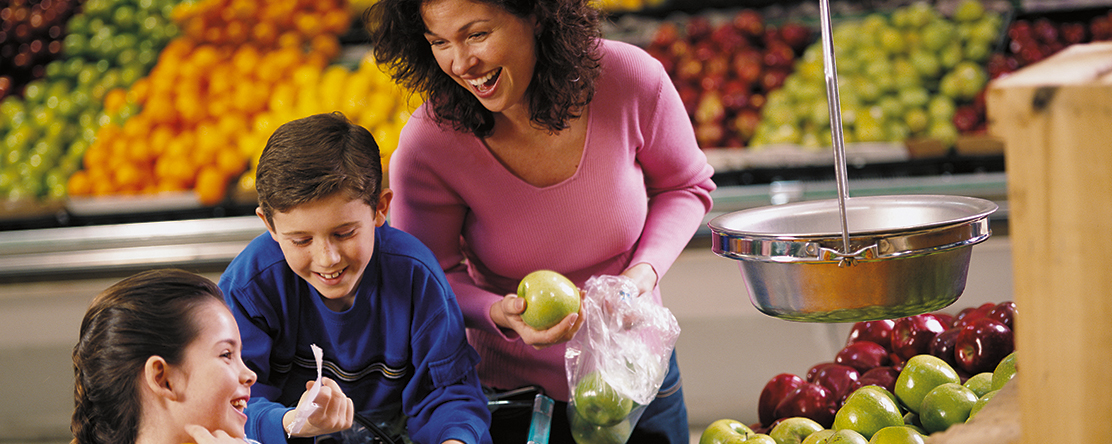
Press Release
SNAP-Ed Eligible Moms, Teens, and Kids are Eating More Produce and Drinking More Water
-
Focus Areas
Chronic Disease Prevention, Healthy Communities -
Issues
Nutrition & Food Security -
Programs
Center for Wellness and Nutrition

California SNAP-Ed eligible families now eating as much produce as Americans of all income levels
Oakland, CA—A new study, published this week in Public Health Nutrition, found that low-income mothers, youth and children in California are eating more healthily. Researchers from the Public Health Institute’s Center for Wellness and Nutrition (CWN) and California State University – Sacramento found that SNAP-Ed eligible families added an additional one-third of a cup of fruits and vegetables to their meals daily, and increased water intake by a cup a day between 2015 and 2017. Teens showed the highest increases in consumption of water, fruits and vegetables.
Almost 13 million Californians—or 1 in 3 residents—are SNAP-Ed eligible. The study, “Three-Year Trends in Dietary Behaviors among Mothers, Teenagers, and Children from Supplemental Nutrition Education Program-Education (SNAP-Ed) Eligible Households across California,” surveyed randomly sampled households with incomes less than 185% of the United States federal poverty level across California. Respondents completed extensive dietary interviews, providing detailed information about all food and drinks consumed during the past 24 hours. Results included:
- Increased Water Intake: Mothers and children reported drinking more than one additional cup of water per day in 2017 than 2015, (up to 8.05 cups among mothers and 4.48 cups among children). Teens increased water intake by two cups a day, up to 6.70 cups.
- Increased Intake of Fruits, Vegetables, with 100% Fruit Juice: Among mothers, consumption of fruits and vegetables with 100% fruit increased by .3 cup a day, up to 3.44 cups in 2017. Teenagers’ diets included 0.4 more cups of fruits and vegetables with 100% fruit juice in 2017 than in 2015. Children’s intake of fruits and vegetables with 100% fruit juice was 2.81 cups in 2015, 3.05 cups in 2016, and 3.16 cups in 2017.
- Increased Intake of Fruits, Vegetables, without 100% Fruit Juice: Intake of fruits and vegetables without 100% fruit juice also increased between 2015 and 2017 for mothers by 0.3 cups (from 2.82 to 3.12 cups), teenagers by 0.38 cups (from 2.43 to 2.81 cups), and children by .32 cups (from 2.40 to 2.72 cups).
- 28.6% of SNAP-Ed eligible mothers met USDA MyPlate fruit consumption recommendations in 2017, compared with just 21.6% of adults in the United States of all incomes. Overall, mothers’ fruit and vegetable consumption were at levels equivalent to national averages representing all income levels.
The chances of dying from a cardiovascular disease is lowered by 4% for every serving of fruits and vegetables eaten a day—and SNAP-Ed eligible populations in past studies were found to eat less than the recommended amount of produce. The survey timeframe corresponds with stepped-up efforts across the state to promote eating more fruits and vegetables through SNAP-Ed, though the study cannot directly tie SNAP-Ed efforts to these changes. SNAP-Ed, the education component of the national food stamp program, focuses on providing families with information, skills and education that promote healthier eating—through initiatives including school programs, public campaigns and budgeting and cooking programs that reached an estimated two million Californians in 2017 alone. In 2018, the majority (68%) of messages included in the 61,549 reported California SNAP-Ed interventions promoted eating fruits and vegetables. 56% included the USDA MyPlate recommendations, such as “make half your plate fruits and vegetables” and “drink and eat beverages and food with less sodium, saturated fat, and added sugars.”
Principal investigator Celeste Doerr, PhD, director of research and evaluation at PHI’s Center for Wellness and Nutrition, explained, “California has made a concerted effort to shift its SNAP-Ed programming to make sure we are following the latest evidence in what works. It is promising that healthful improvements corresponded with changes in SNAP-Ed programming—for those of us doing the work, but most importantly for the families across the state who are eating more healthily.”
###
About the Public Health Institute
The Public Health Institute, an independent nonprofit organization, is dedicated to promoting health, well-being and quality of life for people throughout California, across the nation and around the world.
More Updates
Work With Us
You change the world. We do the rest. Explore fiscal sponsorship at PHI.
Support Us
Together, we can accelerate our response to public health’s most critical issues.
Find Employment
Begin your career at the Public Health Institute.



